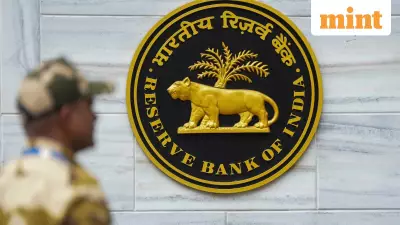
The Indian rupee demonstrated strength in Thursday's trading session, registering a notable gain against the US dollar. The domestic currency closed at 88.57 against the greenback, marking an appreciation of 16 paise from its previous closing position.
Market Performance and Trading Range
During the trading session at the interbank foreign exchange market, the rupee exhibited resilience. It opened strongly at 88.55 against the US dollar and maintained a positive trajectory throughout the day. The local unit experienced some fluctuations, moving between an intraday high of 88.50 and a low of 88.62 before settling at the day's closing figure of 88.57.
The previous trading session had seen the rupee close at 88.73 against the American currency, making Thursday's gain particularly significant for market observers. This upward movement reflects growing confidence in the Indian economy and its currency stability.
Factors Driving Rupee's Strength
Several key factors contributed to the rupee's positive performance against the US dollar. The robust performance of Indian equity markets provided substantial support to the domestic currency. Benchmark indices showed strong upward momentum, creating a favorable environment for currency appreciation.
Another crucial element supporting the rupee was the influx of foreign funds into Indian markets. Foreign institutional investors demonstrated renewed interest in Indian assets, bringing additional dollar liquidity that helped strengthen the local currency. This foreign capital inflow indicates international confidence in India's economic prospects.
Meanwhile, the US dollar index, which measures the greenback's strength against a basket of six major currencies, showed mixed signals. The dollar index was trading 0.07 percent lower at 104.61, providing some relief to emerging market currencies like the rupee. The weakening dollar created favorable conditions for rupee appreciation.
Broader Market Context and Global Influences
The positive movement in the rupee occurred against the backdrop of global economic developments and domestic market conditions. Brent crude futures, the global oil benchmark, showed a slight decline of 0.13 percent to $83.52 per barrel. This modest drop in crude prices provided some comfort to oil-importing nations like India, helping reduce pressure on the current account deficit.
On the domestic equity front, both benchmark indices recorded significant gains. The BSE Sensex jumped 1,196.98 points or 1.61 percent to settle at 75,418.04, showing strong investor confidence. Similarly, the broader NSE Nifty advanced 369.85 points or 1.64 percent to reach 22,967.65, indicating broad-based market optimism.
The combination of strong equity performance, foreign fund inflows, and moderate global crude prices created an ideal environment for rupee strength. Market analysts noted that these factors collectively contributed to building positive sentiment around the Indian currency.
Market Outlook and Future Expectations
Financial experts are closely monitoring the rupee's trajectory amid evolving global and domestic economic conditions. The currency's performance reflects underlying economic fundamentals and investor sentiment toward emerging markets. The consistent foreign fund inflows suggest sustained international confidence in India's growth story.
Market participants will continue to watch global dollar movements, crude oil price trends, and domestic economic indicators for cues on the rupee's future direction. The currency's stability remains crucial for import-export businesses and foreign investors looking at Indian markets.
As the Indian economy continues to demonstrate resilience, the rupee's performance against major global currencies like the US dollar will remain a key indicator of economic health and international investor confidence. The current appreciation trend, if sustained, could positively impact various sectors of the economy.





